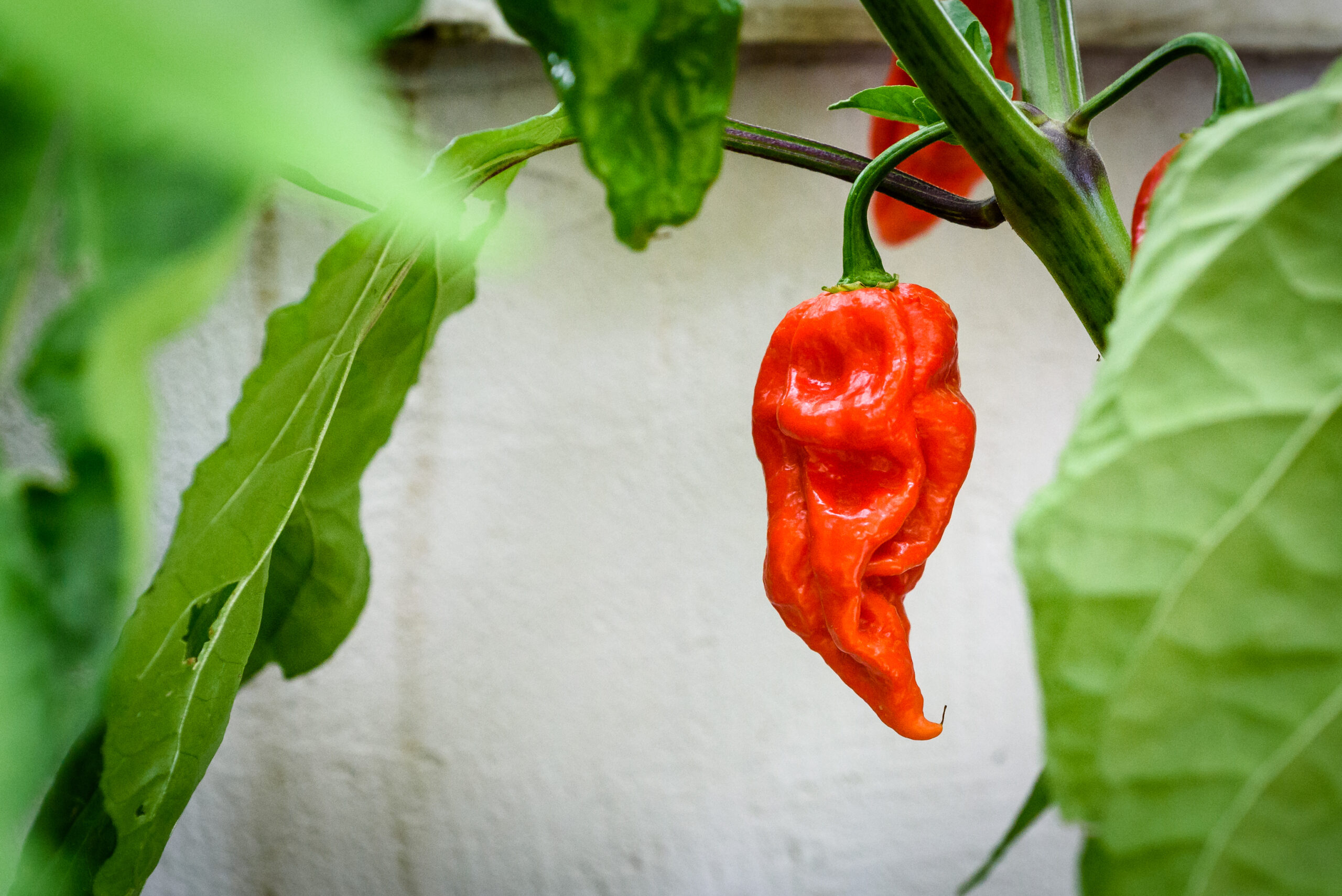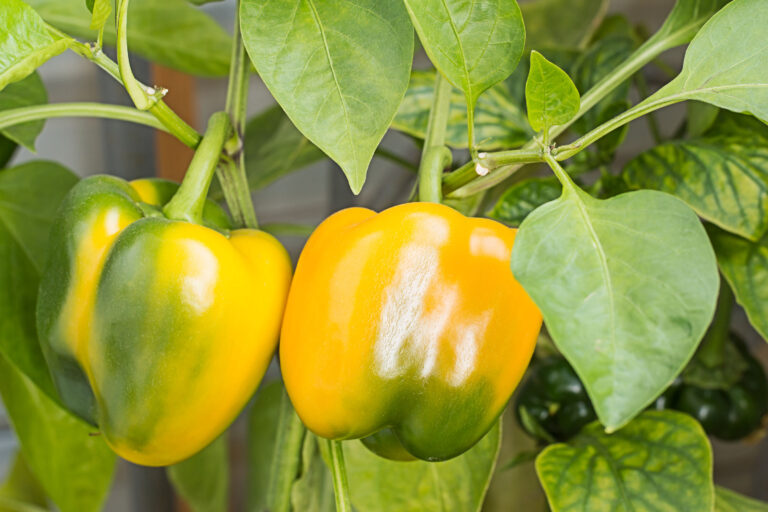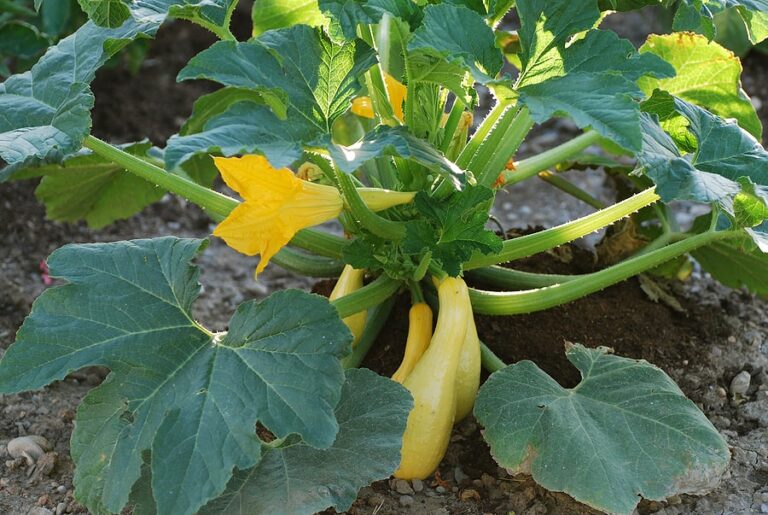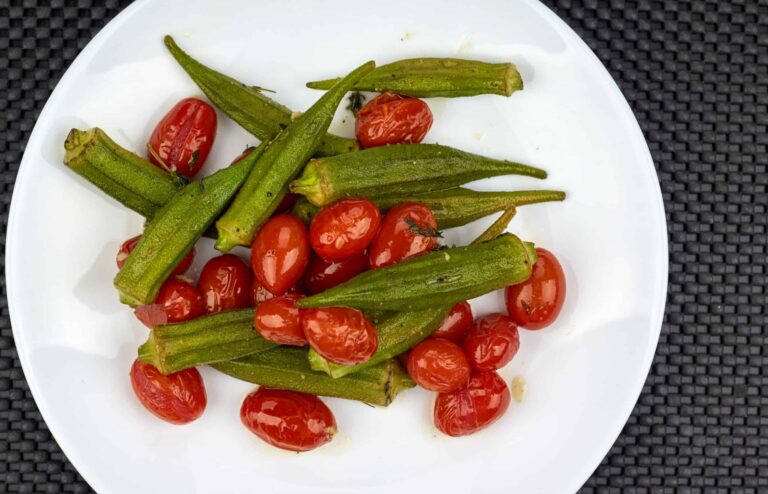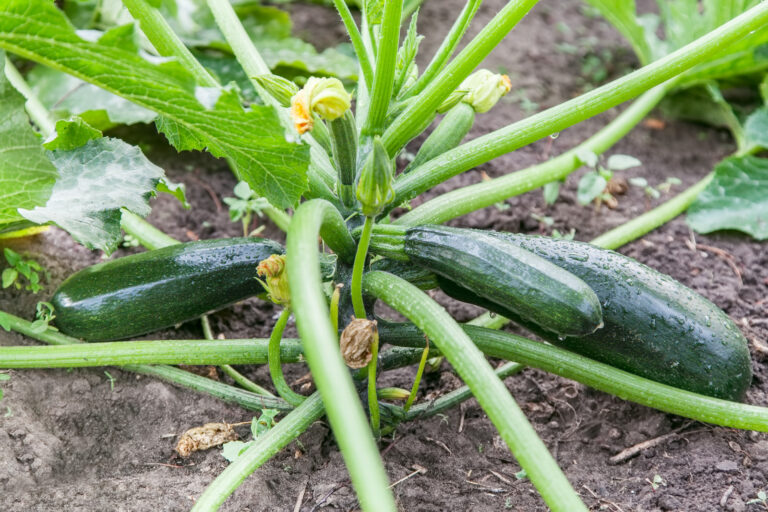How to Increase the Heat of Hot Peppers Naturally
Over the years, I’ve experimented with growing hot peppers in different conditions, testing what truly makes them spicier. From scorching summer heat to strategic watering techniques, I’ve learned firsthand how small adjustments can significantly impact the heat level of homegrown peppers. There’s nothing more satisfying than biting into a pepper you’ve nurtured, only to feel that fiery kick you were aiming for. If you’ve ever wondered why some homegrown peppers turn out milder than expected, the answer lies in how they are grown and the conditions they face.
Hot peppers add excitement to any dish, but not all homegrown peppers reach their full heat potential. If you want to grow peppers that deliver a serious kick, there are several natural ways to increase their spiciness. As someone who has grown hot peppers for years, I’ve experimented with different methods to maximize their heat and found that factors like soil conditions, watering habits, and even stress can play a significant role. Here’s how you can grow hotter peppers naturally in your garden.
Understanding What Makes Peppers Hot
The heat of a pepper comes from capsaicin, a compound concentrated in the pepper’s placenta (the white membrane inside the fruit). Capsaicin production is influenced by genetics, but environmental factors also play a significant role. By optimizing growing conditions, you can encourage higher capsaicin levels and grow hotter peppers.
1. Choose the Right Pepper Variety
The first step in growing hotter peppers is selecting a naturally spicy variety. While all hot peppers contain capsaicin, some varieties have significantly higher levels, making them ideal for those who crave intense heat. The Scoville Heat Unit (SHU) scale measures the spiciness of peppers, with higher numbers indicating more capsaicin content.
Here are some of the hottest pepper varieties to consider growing:
- Carolina Reaper (1,400,000–2,200,000 SHU) – Currently the world’s hottest pepper, the Carolina Reaper is notorious for its fiery intensity and sweet, fruity undertones. It takes around 90–100 days to mature and thrives in warm, sunny climates.
- Ghost Pepper (Bhut Jolokia) (800,000–1,041,427 SHU) – A legendary chili from India, the Ghost Pepper is known for its delayed yet intense heat. It grows best in hot, humid conditions and requires a longer growing season to fully develop its signature spice.
- Habanero (100,000–350,000 SHU) – One of the most popular hot peppers for home gardens, the Habanero has a tropical, citrusy flavor alongside its searing heat. Orange and red varieties are common, but you can also find chocolate and white habaneros with unique flavor profiles.
- Thai Chili (50,000–100,000 SHU) – Small but mighty, Thai chilies are a staple in Southeast Asian cuisine. These compact plants produce an abundance of peppers that are perfect for stir-fries, sauces, and drying. They grow well in containers and hot, sunny conditions.
- Cayenne (30,000–50,000 SHU) – A versatile and easy-to-grow pepper, the Cayenne is commonly used in powdered form for seasoning dishes. It has a sharp, biting heat and matures in about 70–80 days, making it a great choice for beginners looking to grow hotter peppers.
While these varieties already have high capsaicin levels, growing them under optimal conditions can further enhance their spiciness. Selecting the right pepper for your climate and intended culinary use is the first step in cultivating fiery, flavorful peppers.
2. Stress Your Plants (But Not Too Much!)
Mild stress encourages hot peppers to produce more capsaicin as a defense mechanism. Here are some ways to apply beneficial stress:
Limit Watering
- Reduce watering slightly once your plants are established. Allow the soil to dry out between waterings, but don’t let the plants wilt completely.
- Avoid overwatering, as too much moisture can dilute the pepper’s heat and lead to bland fruit.
Increase Sun Exposure
- Peppers thrive in full sun, requiring at least 6–8 hours of direct sunlight daily.
- Higher temperatures and more sunlight increase capsaicin levels, making the peppers hotter.
Avoid Excessive Fertilization
- Too much nitrogen encourages leafy growth but can reduce fruit spiciness.
- Instead, use a low-nitrogen, high-phosphorus, and potassium fertilizer to promote fruit development and heat concentration.
3. Control Soil Conditions
The right soil composition can make a difference in pepper heat levels. Ensuring that your soil is well-balanced and nutrient-rich helps peppers develop strong roots and optimal fruit production, which in turn supports capsaicin concentration.
- Use well-draining, slightly sandy soil – Peppers prefer soil that allows excess water to drain quickly while retaining enough moisture for root development. Sandy or loamy soil creates the right balance, preventing root rot and encouraging stronger plant growth.
- Maintain a soil pH of 6.0–6.8 – Slightly acidic soil is ideal for hot peppers, as it allows for better nutrient absorption. If the soil pH is too high or too low, nutrient uptake can be hindered, leading to weaker plants and milder peppers. Conduct a soil test and amend with lime (to raise pH) or sulfur (to lower pH) if necessary.
- Add organic matter like compost or aged manure – Organic matter improves soil structure, provides essential nutrients, and enhances microbial activity, all of which contribute to healthier plants and hotter peppers. Compost also helps retain the right amount of moisture while preventing over-saturation.
- Incorporate minerals and amendments – Calcium, magnesium, and sulfur are important for pepper plant development. Adding bone meal, Epsom salt (magnesium sulfate), or gypsum can strengthen plants and improve capsaicin production.
- Avoid excessive nitrogen – While nitrogen is crucial for leafy growth, too much of it can lead to excessive foliage at the expense of fruit production. A balanced fertilizer with more phosphorus and potassium will encourage robust fruiting and spicier peppers.
Proper soil preparation is the foundation for growing hotter peppers, and making these small adjustments can significantly impact their final heat level.
4. Increase Heat and Humidity
Temperature plays a direct role in how hot your peppers will be.
- Daytime temperatures between 80–90°F (27–32°C) help maximize capsaicin production.
- Warmer nights (above 70°F or 21°C) also contribute to spicier peppers.
- If you live in a cooler climate, consider growing peppers in a greenhouse or using black plastic mulch to retain heat in the soil.
5. Delay Harvesting for Maximum Heat
Peppers get hotter the longer they remain on the plant. If you want the spiciest peppers possible:
- Allow peppers to fully mature and change color before picking them – Peppers typically start green and ripen to red, orange, or yellow. As they mature, their capsaicin levels increase, making them significantly hotter.
- Aged peppers have more capsaicin than younger, unripe ones – The longer the pepper remains on the plant, the more capsaicin it develops. Peppers that are left to fully ripen will have a richer, more intense heat compared to those harvested early.
- Consider drying mature peppers – Drying further concentrates capsaicin, making dried peppers and chili powders noticeably spicier than fresh ones.
- Test different harvest times – If you want to fine-tune the spice level, try harvesting some peppers at different stages and taste-testing them to determine the best time for maximum heat.
6. Use Epsom Salt for Better Growth
Epsom salt (magnesium sulfate) can help peppers absorb nutrients more effectively.
- Mix one tablespoon of Epsom salt per gallon of water and spray on the leaves every few weeks.
- This enhances fruit production, which indirectly supports capsaicin concentration.
7. Plant Peppers Close Together
Crowding pepper plants slightly (without compromising airflow) can trigger mild stress, encouraging them to produce spicier fruit. Strategic spacing can also help create a microclimate that retains warmth and humidity, factors that contribute to capsaicin production.
- Keep 12–18 inches (30–45 cm) between plants – This spacing creates mild competition for nutrients and water, encouraging plants to focus their energy on fruit development rather than excessive leafy growth.
- Use companion planting to enhance stress and flavor – Interplanting peppers with basil, onions, or marigolds can further stress them slightly while offering pest protection.
- Ensure airflow to prevent disease – While keeping peppers close together helps stress them, poor ventilation can lead to fungal issues. Prune lower leaves and ensure spacing allows some air circulation.
- Consider grouping by variety – Placing hotter varieties closer together may encourage even spicier fruit, as similar plants influence each other’s growing conditions.
By managing spacing carefully, you can create an environment that naturally boosts the heat level of your peppers while keeping your plants healthy and productive.
8. Cross-Pollinate with Hotter Varieties
- Encourage pollinators in your garden – Bees, butterflies, and other insects play a crucial role in transferring pollen between plants. Planting flowers nearby or avoiding pesticides helps attract these beneficial pollinators.
- Grow hotter varieties near milder ones – If you want to develop spicier hybrid peppers, plant hot varieties like Ghost Peppers or Habaneros near milder ones like Jalapeños or Anaheims. Over time, this can result in naturally hotter peppers if you save and plant the seeds.
- Hand-pollinate for controlled results – If you want to be more intentional, you can manually cross-pollinate peppers by using a small brush to transfer pollen from one plant to another, ensuring that hotter varieties contribute their genetics.
- Save seeds from the hottest fruits – Selecting seeds from the spiciest peppers in your garden helps reinforce higher capsaicin levels in future generations. Dry and store seeds properly to maintain their viability for the next planting season.
By strategically cross-pollinating and saving seeds from your hottest peppers, you can gradually create plants that yield spicier fruit year after year.
9. Use Organic Mulch to Retain Heat
A layer of organic mulch can help regulate soil temperature and moisture while reducing weed competition.
- Straw, dried leaves, or grass clippings work well for peppers.
- Warmer soil encourages more capsaicin production.
10. Prune Plants Properly
Pruning your pepper plants properly can help direct the plant’s energy into producing more fruit, including spicier peppers, rather than excessive foliage. However, it’s important to prune with care, as too much pruning can stress the plant and ultimately lead to a reduced yield. Here’s how to prune pepper plants for maximum productivity and heat:
- Remove Lower Leaves and Weak Stems: Begin by removing the leaves at the bottom of the plant and any weak or damaged stems. This helps improve airflow around the plant, reducing the risk of fungal infections and other diseases. Better airflow allows the plant to focus its energy on producing fruit rather than supporting excess foliage. Additionally, cutting back lower leaves helps the plant to redirect its nutrients and resources to the upper branches where fruit develops, potentially leading to more intense pepper flavor and heat.
- Cut Back Excessive Growth: While you want to remove dead or diseased stems, avoid excessive pruning of healthy branches, as it can cause the plant to focus its energy on healing the wounds instead of growing fruit. Limiting pruning to the most necessary areas—such as removing suckers, dead leaves, and weak stems—will help your pepper plants thrive. Keep in mind that peppers already naturally produce a lot of foliage, so moderate pruning should be enough to boost fruit production without compromising the overall health of the plant.
- Encourage Stronger Fruit Development: Pruning in moderation helps to remove excess foliage that may overshadow the developing fruits. By focusing the plant’s energy on fruit production, pruning can enhance capsaicin concentration in the peppers. However, it’s important to recognize the balance: too much pruning can reduce plant vigor, while too little can lead to overcrowding and poor airflow, both of which can impact heat levels and pepper quality.
By understanding the optimal approach to pruning and removing only what’s necessary, you can ensure your pepper plants remain healthy, focused on producing fruit, and able to produce hotter peppers.
Summary
Growing hotter peppers naturally involves a combination of selecting the right variety, managing stress levels, optimizing soil and temperature conditions, and harvesting at peak ripeness. With these strategies, you can maximize the heat of your peppers while still maintaining healthy, productive plants. By making small adjustments to your watering, fertilization, and growing environment, you can enjoy extra-spicy homegrown peppers that rival even the hottest store-bought varieties.
🌶 Peppers Growing Hub
Start here:
- How to Plant and Grow Hot Peppers: A Gardener’s Guide to Spicy Success
- How to Grow Sweet Peppers: A Gardener’s Guide to a Bountiful Harvest
Getting Peppers Started (general prep)
- Seed Starting Peppers: Proven Method for Strong, Healthy Plants
- Soil Preparation for Peppers: The Secret to Strong Roots and Big Harvests
- Best Hot Pepper Varieties to Grow for Salsas, Sauces, and Drying
- Best Sweet Pepper Varieties to Grow
- World’s Hottest Peppers You Can Grow in Your Garden
- The Science of Pepper Heat: Understanding Scoville Units
- Growing Peppers Indoors Under Lights
- Companion Planting with Peppers: Best and Worst Neighbors in the Garden
Planting & Growing Peppers
- When and How to Transplant Pepper Seedlings Outdoors
- 10 Steps to Grow a Bumper Pepper Crops
- How to Grow Hot Peppers in Containers: Tips for Small Spaces
- 7 Tips for Growing Peppers in Pots
- How to Grow Colored Bell Peppers: How to Get Reds, Yellows, and Oranges
- Cross-Breeding Hot Peppers at Home: A Beginner’s Guide
- How to Water & Fertilize Sweet Bell Peppers for Maximum Yield
- Pruning Pepper Plants for Healthier Growth and Bigger Harvests
- Six Tips to Grow Peppers for Flavor
- Pepper Season Extension & Overwintering: How to Keep Plants Producing Longer
Pepper Care & Troubleshooting
- Pepper Pests, Diseases, and Problems—How to Fix Them Naturally
- Caring for Peppers: Mid-Season Problem Cures
- How to Increase the Heat of Hot Peppers Naturally
- Overwintering Pepper Plants Indoors
- How to Overwinter Pepper Plants in Any USDA Zone
Harvesting & Preserving Peppers
- When to Harvest Hot Peppers for Maximum Heat
- How to Harvest Sweet Peppers for the Best Flavor
- How to Preserve Hot Peppers: Drying, Fermenting & Pickling
- How to Ripen Green Peppers Indoors
- Saving Pepper Seeds for Next Year’s Crop
Cooking & Using Peppers
- Preparing and Serving Sweet Peppers – Harvest to Table
- Five Ways to Cook and Serve Chili Peppers
- Stuffed Peppers: Best Varieties for Cooking
- Cooking with Hot Peppers: Flavor & Safety Tips
- How to Handle Hot Peppers Without Burning Your Skin
Books to help you grow:

